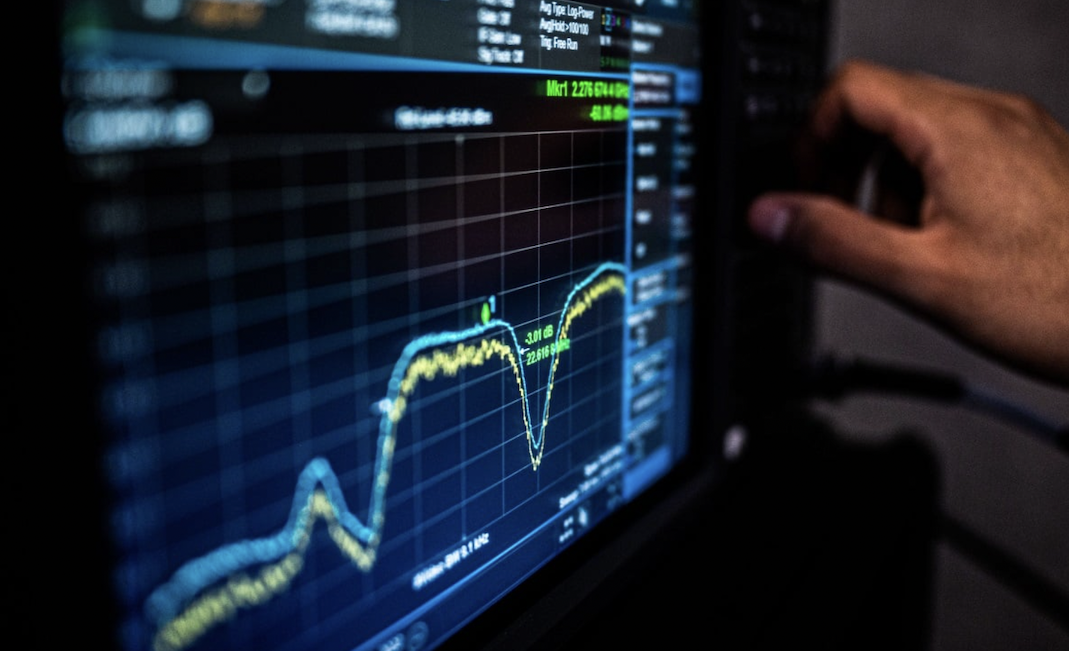Frank Wolfe

An airman from the 216th Space Control Squadron, adjusts a dial while looking at the frequency of a signal on the monitor of a ‘Honey Badger system’ during last fall’s first Black Skies exercise (U.S. Space Force Photo)
The U.S. Space Force’s Space Training and Readiness Command (STARCOM) held the second Black Skies electronic warfare (EW) exercise recently and is preparing to hold another this fall, as the command also gears up for a Red Skies orbital warfare exercise this summer and a Blue Skies cyber warfare exercise next year.
Space Force held the first Black Skies last September.
“A lot of our learning [in Black Skies] is in the command and control [C2] side, on how do we command and control multiple systems, potentially across several AORs [areas of responsibility], and how do we think about that with the command and control centers we have today,” Maj. Gen. Shawn Bratton, the STARCOM commander, said during a virtual Mitchell Institute for Aerospace Studies’ Schriever Spacepower forum on May 10.
Those C2 centers include U.S. Space Command’s Combined Space Operations Center (CSpOC) run by the Delta 5 squadron at Vandenberg Space Force Base, Calif., and the National Space Defense Center, run by the Delta 15 squadron, established in March at Schriever Space Force Base, Colo.
“A lof of our [Black Skies] lessons learned were in this C2 function,” Bratton said on May 10. “There’s always lessons learned on the intel side, on how do we think about targeting, our understanding of the adversary, our ability to move information rapidly across the enterprise in the electromagnetic warfare suite between offensive and defensive capabilities.”
On May 10 at a Center for Strategic and International Studies forum in Washington, D.C., Bratton also addressed the upcoming Red Skies exercise and said that, as a prelude to that, Space Force’s orbital warfare range and aggressor units had conducted an experiment in February with Boeing‘s Millenium Space Systems’ TETRA-1 microsatellite.
“We flew TETRA-1. We did some distant RPO [rendezvous and proximity operations] activities out at GEO [geosynchronous orbit], thinking through range procedures,” Bratton said. “That will all feed what we’re learning with the range and aggressor units to feed into Red Skies.”
Space Force said in March that Black Skies provides “advanced EW training to space warfighters focused on protecting and defending aspects of the electromagnetic spectrum, like those that intervene with GPS and communications signals.”
The most recent Black Skies exercise was a live simulation involving systems and 42 simulated targets, Space Force said in March.
“The live range spanned the distance between California and Colorado and elevated to a specified point 22,000 miles above the surface of the Earth,” Space Force said. “This range allowed space warfighters participating in the exercise to fire their weapon systems in a safe environment that replicated certain war-like conditions, offering them an opportunity to rehearse and refine their warfighting tactics, techniques, and procedures.”
The service said that during a scenario in the U.S. European Command (USEUCOM) AoR, “participants planned and executed integrated operations and refined command relationships to protect and defend vital U.S. and coalition interests.”
Space Force Capt. Ellie Vlahos, the director of the most recent Black Skies exercise, said in a Space Force statement in March that “a major take away…was incorporating more theater products” and that Space Force beefed up the ground scheme of maneuver and wrote a USEUCOM non-kinetic fires matrix so that the SEW [Space Electronic Warfare] planner could layer in EW effects around blue air and ground objectives.”
Space Force Chief of Space Operations Gen. B. Chance Saltzman said in February that the service needs to ramp up its use of high-fidelity simulators to train personnel.
“We’ve done two Black Skies live fire events, satellite jamming events, where we think about how do we use offensive defense in the electromagnetic spectrum safe and professionally, how do we defend against it when we see people jamming us, how do we geo-locate those jammers and understand the capabilities that we have ” Bratton said at the Schriever Spacepower forum on May 10.
“I think it’ll grow over time and maybe a little bit even more live activity than we’re doing now,” Bratton said of Black Skies. “We’re talking about where we go with coalition partners, as part of these events.”
No comments:
Post a Comment